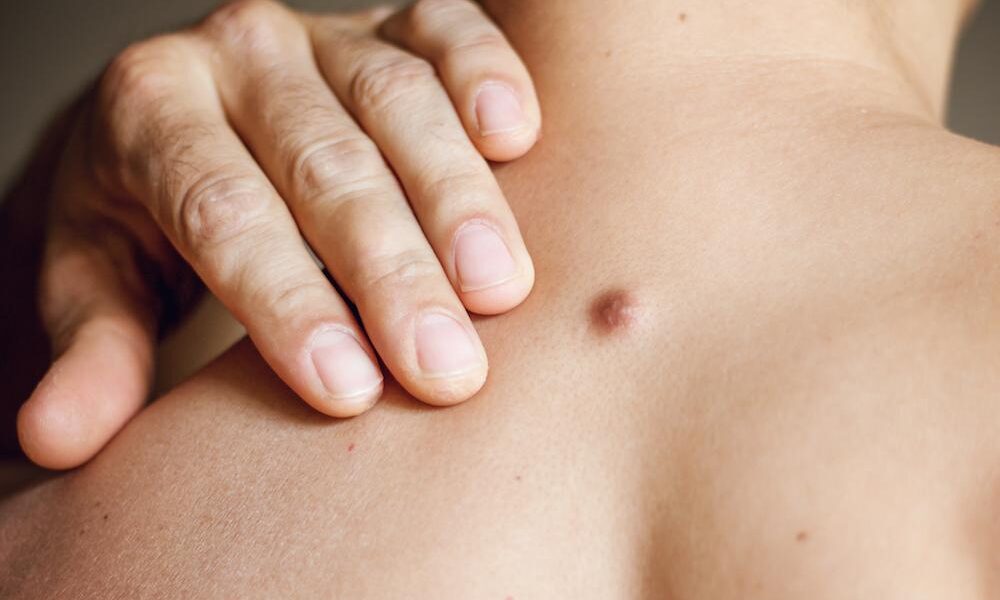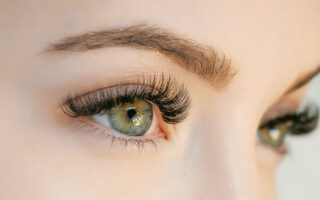Skin tags are caused by a variety of circumstances. They affect both men and women but are more common in older people, obese people, and people with type 2 diabetes. They occur often during pregnancy, presumably because to hormonal changes. Others acquire them for no apparent reason.
Skin tags may fall off naturally if the tissue has twisted and died owing to a lack of oxygen and blood flow. They are usually harmless and cause no discomfort. Skin tags, on the other hand, may be safely removed if they become bothersome.
How to remove a skin tag?
Skin tag removal is deemed cosmetic and hence not available through the NHS. If you are unsure, visit your primary care physician first. When considering skin tag removal, be sure the practitioner is certified and has medical expertise. Before executing a removal, the practitioner must be able to analyse and diagnose the skin condition. Check your practitioner’s credentials before removing skin tags.
Would you like to get rid of skin tags? Fear not, it’s possible by going for cryopen treatment service by https://cryosonic.co.uk/
Cryotherapy is a popular method for eliminating skin tags in private skin clinics. Cryotherapy is a treatment that uses extreme cold to damage skin tissue. The process is called cryo-necrosis, or freezing-induced tissue destruction. Cryotherapy (Cryopen) is a non-anesthetic skin removal method that produces less scarring than other methods.
Skin tag removal with Cryopen might take anywhere from 10 to 60 seconds depending on the size and depth of the lesion.
Is skin tag removal a one-off?
Cryotherapy is a permanent treatment for most skin tags. Some skin lesions are harder to remove than others. Warts, for example, may require several treatment sessions. Skin tags may usually be removed in one treatment. Some larger skin tags require a follow-up treatment two weeks later. They can recur, however this is rare if the lesion has been successfully eliminated.
Will scarring occur after Cryopen excision of skin tags?
Scarring is unlikely. Skin can temporarily darken or lighten. Both usually only last a few months. Darker skin is more prone to pigmentation changes.
Is removing a skin tag painful?
When the nitrous oxide reaches the lesion’s base, it causes discomfort similar to pressing a ballpoint pen on the skin. There may be some stinging for a few minutes following treatment. Rarely, a blister may occur and linger a few hours after treatment.
CryoPenTM is the best treatment for:
Lentigo solaris (sun spots) Spots of age
Milia Warts is an author’s fictitious character.
Angioma Pseudo-ver (viral verruca)
Cryotherapy freezes the treated area. As a result of the injury, the localised cells shrivel and die. The treated area may get darker over time, but it will return to its normal pigmented condition in about six weeks. All of these may be safely removed.
Is cryotherapy safe?
Cryotherapy is a low-risk procedure. Using a CryoPenTM delivers N20 directly to the afflicted area, bypassing healthy surrounding tissue. The European Commission and the FDA have authorised CryoPenTM.
Is counselling painful?
The nitrous oxide causes a stinging nettle-like irritation on the skin until it reaches the bottom of the area. There may be some lingering stinging for a few minutes after treatment.
Can my doctor refuse to remove my skin lesion?
After visiting their GP to seek treatment for cosmetic skin issues, several of our customers were advised that the NHS no longer provides this service and that they must seek treatment elsewhere.
This treatment has been requested frequently, and we are pleased to be able to provide it at our Empire Beauty Clinic in Dundee. This therapy is no longer available via your primary care physician’s office, and only a few clinics are prepared to deliver it.
What can I expect from Cryo Pen therapy?
Each client is unique, thus each consultation is tailored to their exact needs. During your consultation, you will be asked about your medical history and the lesions. The practitioner will next go over the different treatment options and their expected consequences. If an acceptable treatment has been selected and agreed upon, the therapy can be delivered. If a lesion is concerning, you should consult your General Practitioner before treating it.
Your therapist will use the pen to target the lesions during therapy. Small and large lesions are cured in a few seconds. The length of therapy depends on the lesion’s size and form. During treatment, a frost or ice-field may appear on the lesion’s surface. After freezing a lesion, it is allowed to defrost for a few seconds before undergoing a second treatment. If the treated area is prone to friction and irritation, a plaster or simple dressing may be applied (for example, the back of the knee). The treatment does not require anaesthesia.
During the procedure, the area freezes and turns white. The melting of this white spot causes a flushing and the region turns crimson. This thawing causes a pinching sensation due to the creation of a weal. This usually develops into a blister that lasts 3–5 days before scabbing over and healing fully. The scab will be gone after two weeks. A new scab may emerge depending on the degree of the freezing. The lesion will heal in 2 to 6 weeks. After initial healing, the area will seem lighter than the surrounding area due to the loss of melanocytes. Lesions generally have a darker colour (because to dead cells) and peel or flake away as the skin below regenerates.
How long does a treated blister last?
A blister might appear between 2 and 24 hours after freezing. Blisters may take many days to heal. After a blister ruptures, a crust forms. Healing time varies depending on the depth of the freeze and the size of the lesion.
Is it a pain?
It is usually easily tolerated, giving just little discomfort. The nitrous oxide feels like a stinging nettle on the skin, but it fades away quickly. After treatment, there may be some residual stinging for several minutes. Immediately after treatment, the skin lesion may become red, painful, blistered, and/or create a scab. A deeper freeze may be required, resulting in more discomfort, which may be felt immediately after treatment and for a variable amount of time afterwards.
How is cryosurgery better to other methods of removing skin lesions?
Cryosurgery is a minimally invasive treatment that needs no anaesthesia and leaves minimal scars. And it is easy to heal.
What may I expect post-treatment?
The lesion may become red and furious during the following several days as a scab grows on the wound. The remaining skin colour typically returns to normal within 1-6 weeks, however a minor area of scarring or a change in skin colour is possible. Picking at the scab might cause skin scars.
After treatment, residual stinging is common and can last up to an hour. The area will likely grow red, swollen, and unpleasant, with a chance of a blister forming. The wound may weep and a scab may develop. Avoid picking at the wound as this may cause scarring. The skin lesion will grow brittle, deepen in colour, and peel off in 1–2 weeks. Picking at the damaged area might delay the healing process. Leg lesions are known for taking longer to heal. A follow-up appointment will be planned, and if necessary, further therapy will be given.
What happens after Cryo Pen therapy?
Following your treatment at the Clinic, you will be given special aftercare instructions. No downtime is necessary; many clients arrange this treatment over their lunch break and return to work immediately.
We do not recommend dressing or plastering a wound unless expressly ordered by a doctor or other medical practitioner. Healing takes between 1 and 6 weeks. If you suspect an infection (increasing redness or pain, yellow discharge or puss) schedule an appointment for a review as soon as possible.
Is it possible to be scarred?
Cryosurgery leaves the least scarring of all lesion eradication methods because it does the least harm to the connective tissue.
How long does the cure last?
For most lesions, cryosurgery is a permanent treatment. Some lesions are harder to remove than others. Shorter freeze times and more procedures in more delicate places may be required to get the desired outcome with the least amount of damage to the good skin around. In certain situations, a deep lesion may require many rigorous treatments to heal. Warts that haven’t been pre-treated may require many freezing treatments.
What skin abnormalities respond best to cryotherapy?
This method is great for warts, moles, actinic, seborrheic, and cherry angiomas.
Can you tell me what lesions shouldn’t be frozen?
All melanomas and recurrent BCCs are covered. Melanoma may spread through the skin, lymphatic system, and blood. A melanoma might become significantly more aggressive if a section of the tumour is left undetected. Basil cell carcinoma spreads through local extension, therefore a recurrence may necessitate more extensive surgery.
Everyone can use cryotherapy.
Patients with auto-immune diseases or cold sensitivity are not eligible for treatment. It is also not advised for those with keloid scarring. Those with high levels of cryoglobulins should be handled with caution. If you have very dark skin, cryosurgery may not be the ideal option since it destroys melanocytes in the treated area, making the skin lighter. For darker skin tones, repeat the quick freezing cycles. This simply means that multiple treatments, spaced a few weeks apart, may be required to completely remove your lesion.




